#invasivesnet search results
Two species of the genus Greenidea are described morphologically and molecularly, expanding their distribution. This is the first record in Atacama Desert, northern Chile. Open access buff.ly/r3Dye7Q #INVASIVESNET #BIR

Rapid eastward range extension of the millipede Polydesmus angustus, from Germany to Poland. The species occupies disturbed, anthropogenic habitats, supporting a human-mediated dispersal scenario. Open access buff.ly/iN6BJ75 #INVASIVESNET #BIR
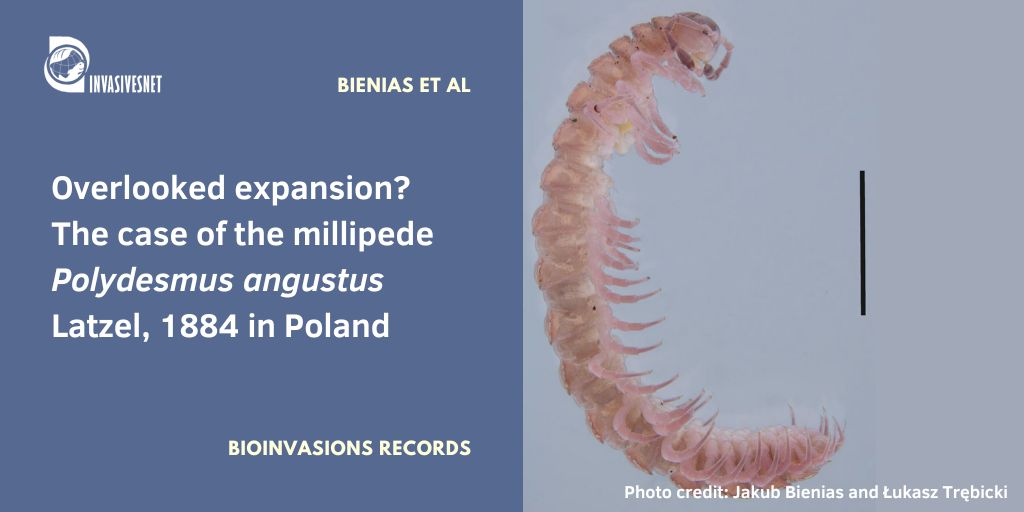
Explore the latest issue of Management of Biological Invasions #MBI 👇 buff.ly/Nvh6LEo #INVASIVESNET #OpenAccess #OA

Explore a Special Issue of Management of Biological Invasions (MBI) on advances in the study of the management of biological invasions in inland waters and the legacy of Gordon Howard Copp (1956–2023) 👇 buff.ly/yS9hwpf #INVASIVESNET #MBI #GuardIAS

🇬🇧 An overview on Reeves’ muntjac (Muntiacus reevesi) in Austria: sightings, introduction pathways and further research needs. Open access 👇 buff.ly/3PV5iMD #BIR #INVASIVESNET

Current distribution of the White snakeroot Ageratina altissima in Austria. Given its substantial expansion, the future spread of Ageratina altissima should be monitored, and if necessary, management actions should be taken. Open access buff.ly/saxdbSu #INVASIVESNET #BIR
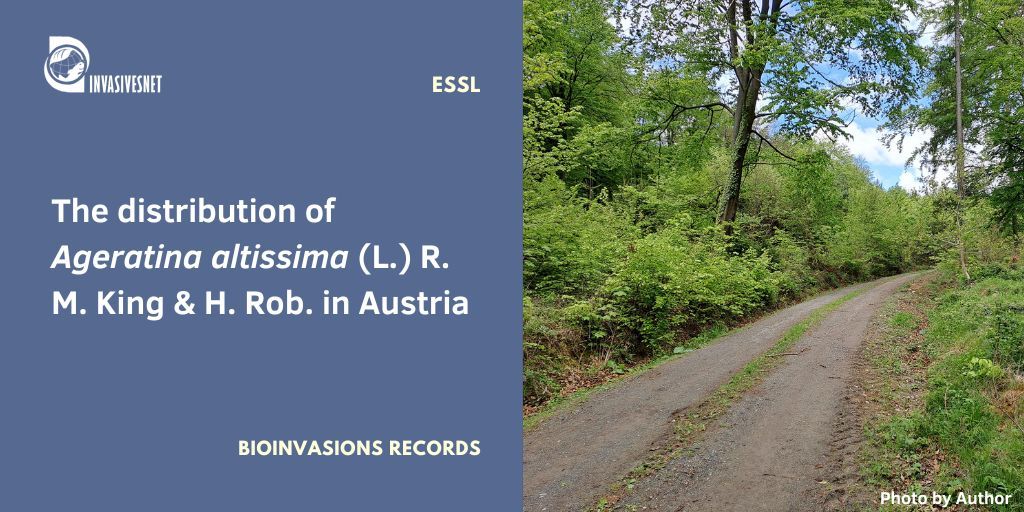
The Australian invasive weed Atriplex semilunaris is recorded in Gran Canaria and Tenerife. Its recent appearance may be the gateway for its introduction to the rest of the archipelago. Open access buff.ly/YpmWjUs #INVASIVESNET #BIR
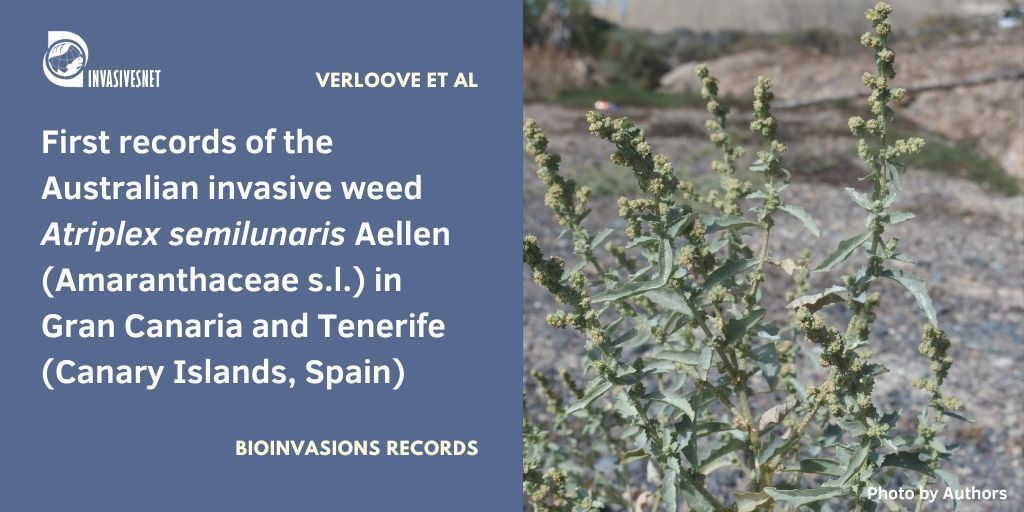
Amelanchier × lamarckii, native to North America, has escaped cultivation and is recorded as a new casual alien plant in Lithuania. The naturalization and spread to natural habitats are highly probable. Open access buff.ly/ePmZ8Qe #INVASIVESNET #BIR
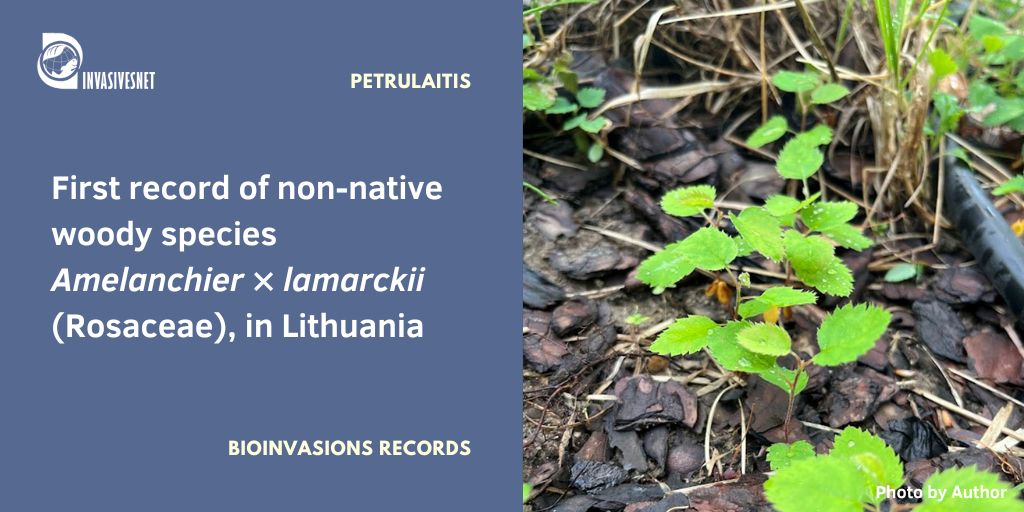
Genetic diversity and aquatic invasions. The letter to the editor argues for an integrative approach when determining native ranges, combining genetic data with historical, ecological and biogeographical analyses. Open access article 👇 buff.ly/tB9jWZv #INVASIVESNET #AI
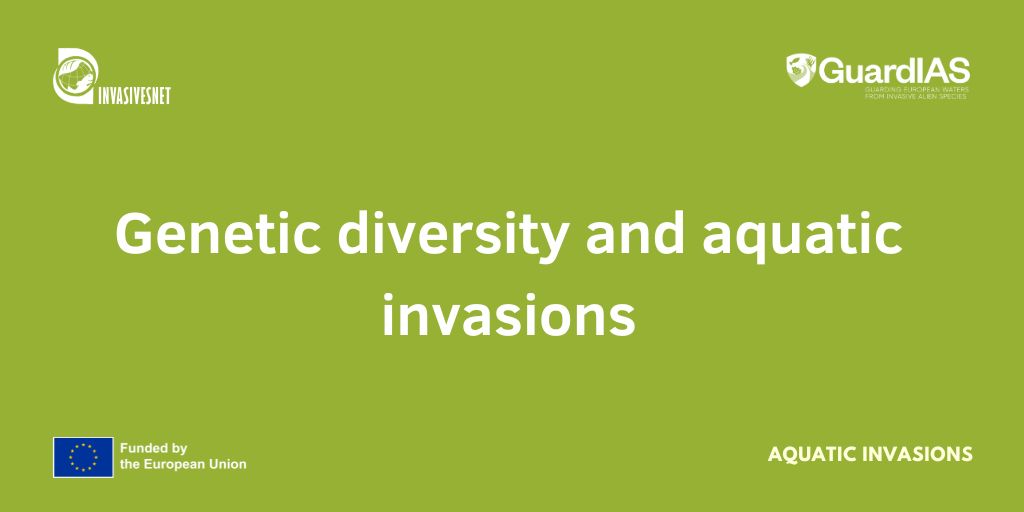
The most recent issue of Management of Biological Invasions #MBI is now online! Explore a summary here 👇 buff.ly/LuaQoKM #INVASIVESNET
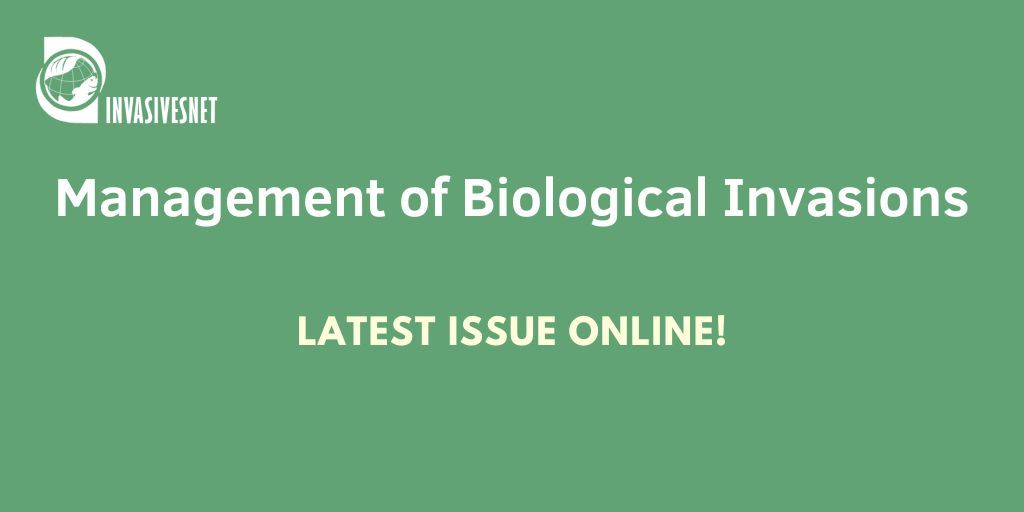
Persistencia de una especie nativa tras la invasión de la tilapia del Nilo. La persistencia de Oreochromis korogwe puede deberse a una tasa de crecimiento más rápida que la de O. niloticus, especie invasora de gran tamaño. Acceso abierto 👇 buff.ly/HSyvjMx #INVASIVESNET
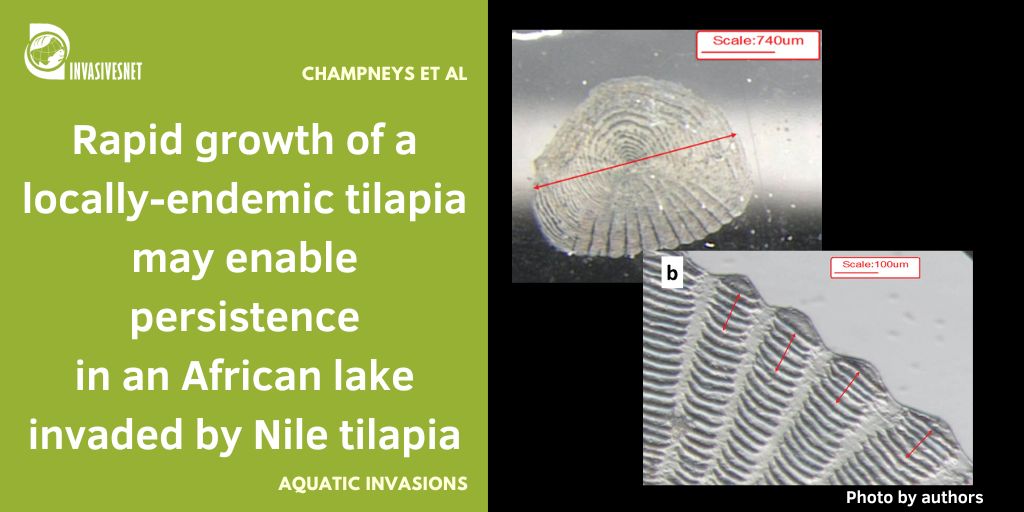
List of non-native aquatic species in the Yellow River Basin including a total of 112 species. Many non-native species have become important species in local aquaculture, the aquarium and ornamental trade or for other human uses. 👇 buff.ly/M2j2oM9 #INVASIVESNET #AI
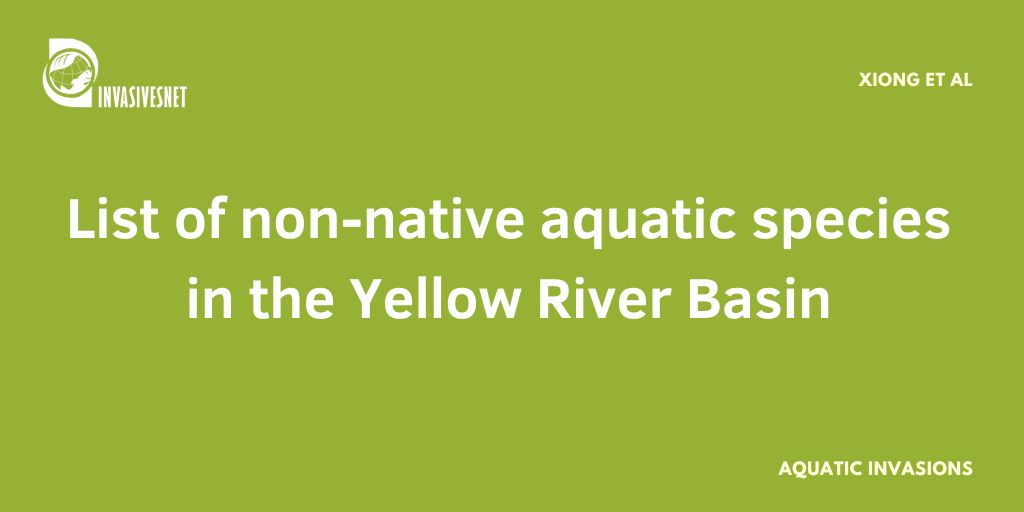
The Chesapeake blue crab in the Ukrainian part of the Black Sea. The study demonstrates a first recorded female blue crab, carrying eggs and successfully reproduced in a non-native habitat off the coast of Ukraine. Open access 👇 buff.ly/NXO1YNh #INVASIVESNET #AI

New issues summaries are now online! MBI: buff.ly/sjZNWAH AI: buff.ly/7lxCOr2 BIR: buff.ly/321Sbrx #INVASIVESNET #OpenAccess

Reproduction of the New Zealand mud snail is sensitive to the composition of the water. Thus, water composition is a factor that cannot be neglected in lab experiments. Open access 👇 buff.ly/4h1OXRt #INVASIVESNET #AI #AquaticInvasions
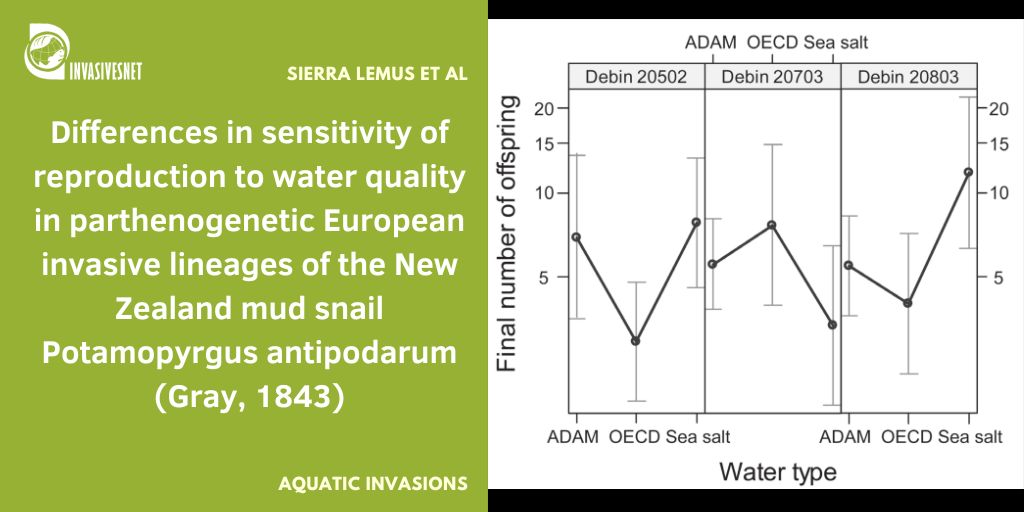
Desiccation tolerance of invasive Japanese mystery snails: important adaptation that facilitates colonisation of dynamic water bodies, dispersal to novel environments, and potential resistance to contemporary management methods 👇 buff.ly/rgLQL8L #INVASIVESNET #AI
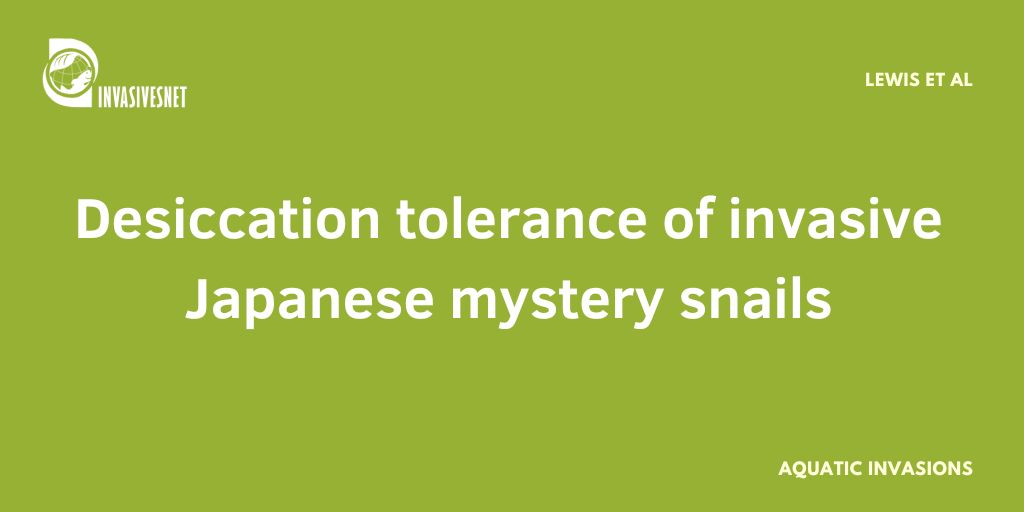
Regardless of the pathway of introduction, Placobdella parasitica is an established non-native species in the Rogue River, and it is expected to have ecological impacts in the watershed. Open access article 👇 buff.ly/gCpjWwW #INVASIVESNET #AI #AquaticInvasions

Non-native sessile benthic species in an upwelling region of Brazilian Coast. The authors updated the list of non-native species on the Brazilian coast from 77 to 99 benthic sessile non-native species. Open access 👇 buff.ly/0rqdTq4 #INVASIVESNET #AI #AquaticInvasions
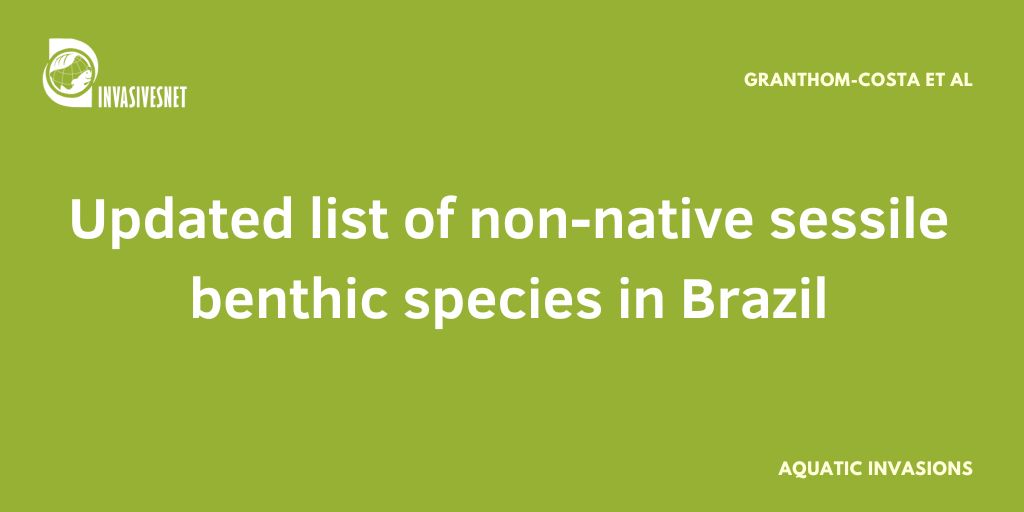
Non-indigenous mysids in the North Sea Canal, where a large number of non-native species have been detected. Shipping has facilitated the transport of many of these, including the two newly reported mysids described herein. Open access 👇 buff.ly/4XZhbi9 #INVASIVESNET #AI

Two species of the genus Greenidea are described morphologically and molecularly, expanding their distribution. This is the first record in Atacama Desert, northern Chile. Open access buff.ly/r3Dye7Q #INVASIVESNET #BIR

Rapid eastward range extension of the millipede Polydesmus angustus, from Germany to Poland. The species occupies disturbed, anthropogenic habitats, supporting a human-mediated dispersal scenario. Open access buff.ly/iN6BJ75 #INVASIVESNET #BIR

Amelanchier × lamarckii, native to North America, has escaped cultivation and is recorded as a new casual alien plant in Lithuania. The naturalization and spread to natural habitats are highly probable. Open access buff.ly/ePmZ8Qe #INVASIVESNET #BIR

Current distribution of the White snakeroot Ageratina altissima in Austria. Given its substantial expansion, the future spread of Ageratina altissima should be monitored, and if necessary, management actions should be taken. Open access buff.ly/saxdbSu #INVASIVESNET #BIR

The Australian invasive weed Atriplex semilunaris is recorded in Gran Canaria and Tenerife. Its recent appearance may be the gateway for its introduction to the rest of the archipelago. Open access buff.ly/YpmWjUs #INVASIVESNET #BIR

Regardless of the pathway of introduction, Placobdella parasitica is an established non-native species in the Rogue River, and it is expected to have ecological impacts in the watershed. Open access article 👇 buff.ly/gCpjWwW #INVASIVESNET #AI #AquaticInvasions

Explore the latest issue of Management of Biological Invasions #MBI 👇 buff.ly/Nvh6LEo #INVASIVESNET #OpenAccess #OA

Desiccation tolerance of invasive Japanese mystery snails: important adaptation that facilitates colonisation of dynamic water bodies, dispersal to novel environments, and potential resistance to contemporary management methods 👇 buff.ly/rgLQL8L #INVASIVESNET #AI

The Chesapeake blue crab in the Ukrainian part of the Black Sea. The study demonstrates a first recorded female blue crab, carrying eggs and successfully reproduced in a non-native habitat off the coast of Ukraine. Open access 👇 buff.ly/NXO1YNh #INVASIVESNET #AI

Non-native sessile benthic species in an upwelling region of Brazilian Coast. The authors updated the list of non-native species on the Brazilian coast from 77 to 99 benthic sessile non-native species. Open access 👇 buff.ly/0rqdTq4 #INVASIVESNET #AI #AquaticInvasions

Genetic diversity and aquatic invasions. The letter to the editor argues for an integrative approach when determining native ranges, combining genetic data with historical, ecological and biogeographical analyses. Open access article 👇 buff.ly/tB9jWZv #INVASIVESNET #AI

List of non-native aquatic species in the Yellow River Basin including a total of 112 species. Many non-native species have become important species in local aquaculture, the aquarium and ornamental trade or for other human uses. 👇 buff.ly/M2j2oM9 #INVASIVESNET #AI

Explore a Special Issue of Management of Biological Invasions (MBI) on advances in the study of the management of biological invasions in inland waters and the legacy of Gordon Howard Copp (1956–2023) 👇 buff.ly/yS9hwpf #INVASIVESNET #MBI #GuardIAS

Persistencia de una especie nativa tras la invasión de la tilapia del Nilo. La persistencia de Oreochromis korogwe puede deberse a una tasa de crecimiento más rápida que la de O. niloticus, especie invasora de gran tamaño. Acceso abierto 👇 buff.ly/HSyvjMx #INVASIVESNET

The most recent issue of Management of Biological Invasions #MBI is now online! Explore a summary here 👇 buff.ly/LuaQoKM #INVASIVESNET

Non-indigenous mysids in the North Sea Canal, where a large number of non-native species have been detected. Shipping has facilitated the transport of many of these, including the two newly reported mysids described herein. Open access 👇 buff.ly/4XZhbi9 #INVASIVESNET #AI

Records attributed to the native species Andropogon distachyos are identified as the African weed A. abyssinicus based on morphological characteristics, molecular data and ploidy estimation. Open access 👇 buff.ly/zfJsF4n #INVASIVESNET #BIR
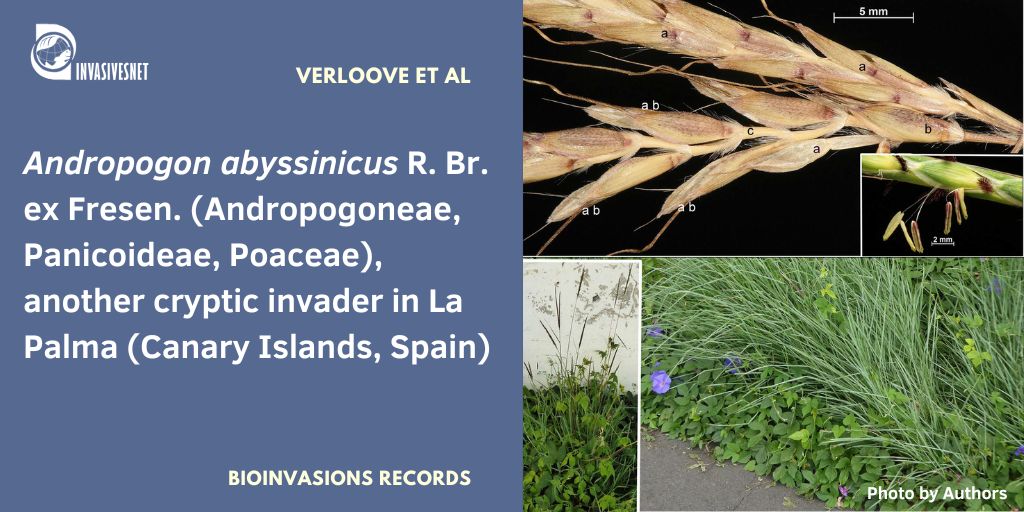
New issues summaries are now online! MBI: buff.ly/sjZNWAH AI: buff.ly/7lxCOr2 BIR: buff.ly/321Sbrx #INVASIVESNET #OpenAccess

Reproduction of the New Zealand mud snail is sensitive to the composition of the water. Thus, water composition is a factor that cannot be neglected in lab experiments. Open access 👇 buff.ly/4h1OXRt #INVASIVESNET #AI #AquaticInvasions

🇬🇧 An overview on Reeves’ muntjac (Muntiacus reevesi) in Austria: sightings, introduction pathways and further research needs. Open access 👇 buff.ly/3PV5iMD #BIR #INVASIVESNET

Two species of the genus Greenidea are described morphologically and molecularly, expanding their distribution. This is the first record in Atacama Desert, northern Chile. Open access buff.ly/r3Dye7Q #INVASIVESNET #BIR

Rapid eastward range extension of the millipede Polydesmus angustus, from Germany to Poland. The species occupies disturbed, anthropogenic habitats, supporting a human-mediated dispersal scenario. Open access buff.ly/iN6BJ75 #INVASIVESNET #BIR

Explore the latest issue of Management of Biological Invasions #MBI 👇 buff.ly/Nvh6LEo #INVASIVESNET #OpenAccess #OA

Explore a Special Issue of Management of Biological Invasions (MBI) on advances in the study of the management of biological invasions in inland waters and the legacy of Gordon Howard Copp (1956–2023) 👇 buff.ly/yS9hwpf #INVASIVESNET #MBI #GuardIAS

🇬🇧 An overview on Reeves’ muntjac (Muntiacus reevesi) in Austria: sightings, introduction pathways and further research needs. Open access 👇 buff.ly/3PV5iMD #BIR #INVASIVESNET

New issues summaries are now online! MBI: buff.ly/sjZNWAH AI: buff.ly/7lxCOr2 BIR: buff.ly/321Sbrx #INVASIVESNET #OpenAccess

The most recent issue of Management of Biological Invasions #MBI is now online! Explore a summary here 👇 buff.ly/LuaQoKM #INVASIVESNET

The Australian invasive weed Atriplex semilunaris is recorded in Gran Canaria and Tenerife. Its recent appearance may be the gateway for its introduction to the rest of the archipelago. Open access buff.ly/YpmWjUs #INVASIVESNET #BIR

Genetic diversity and aquatic invasions. The letter to the editor argues for an integrative approach when determining native ranges, combining genetic data with historical, ecological and biogeographical analyses. Open access article 👇 buff.ly/tB9jWZv #INVASIVESNET #AI

Reproduction of the New Zealand mud snail is sensitive to the composition of the water. Thus, water composition is a factor that cannot be neglected in lab experiments. Open access 👇 buff.ly/4h1OXRt #INVASIVESNET #AI #AquaticInvasions

Amelanchier × lamarckii, native to North America, has escaped cultivation and is recorded as a new casual alien plant in Lithuania. The naturalization and spread to natural habitats are highly probable. Open access buff.ly/ePmZ8Qe #INVASIVESNET #BIR

Current distribution of the White snakeroot Ageratina altissima in Austria. Given its substantial expansion, the future spread of Ageratina altissima should be monitored, and if necessary, management actions should be taken. Open access buff.ly/saxdbSu #INVASIVESNET #BIR

List of non-native aquatic species in the Yellow River Basin including a total of 112 species. Many non-native species have become important species in local aquaculture, the aquarium and ornamental trade or for other human uses. 👇 buff.ly/M2j2oM9 #INVASIVESNET #AI

The Chesapeake blue crab in the Ukrainian part of the Black Sea. The study demonstrates a first recorded female blue crab, carrying eggs and successfully reproduced in a non-native habitat off the coast of Ukraine. Open access 👇 buff.ly/NXO1YNh #INVASIVESNET #AI

Persistencia de una especie nativa tras la invasión de la tilapia del Nilo. La persistencia de Oreochromis korogwe puede deberse a una tasa de crecimiento más rápida que la de O. niloticus, especie invasora de gran tamaño. Acceso abierto 👇 buff.ly/HSyvjMx #INVASIVESNET

Non-native sessile benthic species in an upwelling region of Brazilian Coast. The authors updated the list of non-native species on the Brazilian coast from 77 to 99 benthic sessile non-native species. Open access 👇 buff.ly/0rqdTq4 #INVASIVESNET #AI #AquaticInvasions

Regardless of the pathway of introduction, Placobdella parasitica is an established non-native species in the Rogue River, and it is expected to have ecological impacts in the watershed. Open access article 👇 buff.ly/gCpjWwW #INVASIVESNET #AI #AquaticInvasions

Non-indigenous mysids in the North Sea Canal, where a large number of non-native species have been detected. Shipping has facilitated the transport of many of these, including the two newly reported mysids described herein. Open access 👇 buff.ly/4XZhbi9 #INVASIVESNET #AI

Records attributed to the native species Andropogon distachyos are identified as the African weed A. abyssinicus based on morphological characteristics, molecular data and ploidy estimation. Open access 👇 buff.ly/zfJsF4n #INVASIVESNET #BIR

Desiccation tolerance of invasive Japanese mystery snails: important adaptation that facilitates colonisation of dynamic water bodies, dispersal to novel environments, and potential resistance to contemporary management methods 👇 buff.ly/rgLQL8L #INVASIVESNET #AI

Something went wrong.
Something went wrong.
United States Trends
- 1. Luka 61.3K posts
- 2. Clippers 17.9K posts
- 3. Lakers 47.8K posts
- 4. #DWTS 95.1K posts
- 5. Dunn 6,609 posts
- 6. #LakeShow 3,500 posts
- 7. Kawhi 6,175 posts
- 8. Jaxson Hayes 2,436 posts
- 9. Robert 135K posts
- 10. Reaves 11.9K posts
- 11. Ty Lue 1,569 posts
- 12. Collar 43.9K posts
- 13. Jordan 117K posts
- 14. Zubac 2,290 posts
- 15. Alix 15K posts
- 16. Elaine 46.1K posts
- 17. Godzilla 36.2K posts
- 18. Colorado State 2,422 posts
- 19. TOP CALL 13.9K posts
- 20. Dylan 33.9K posts


